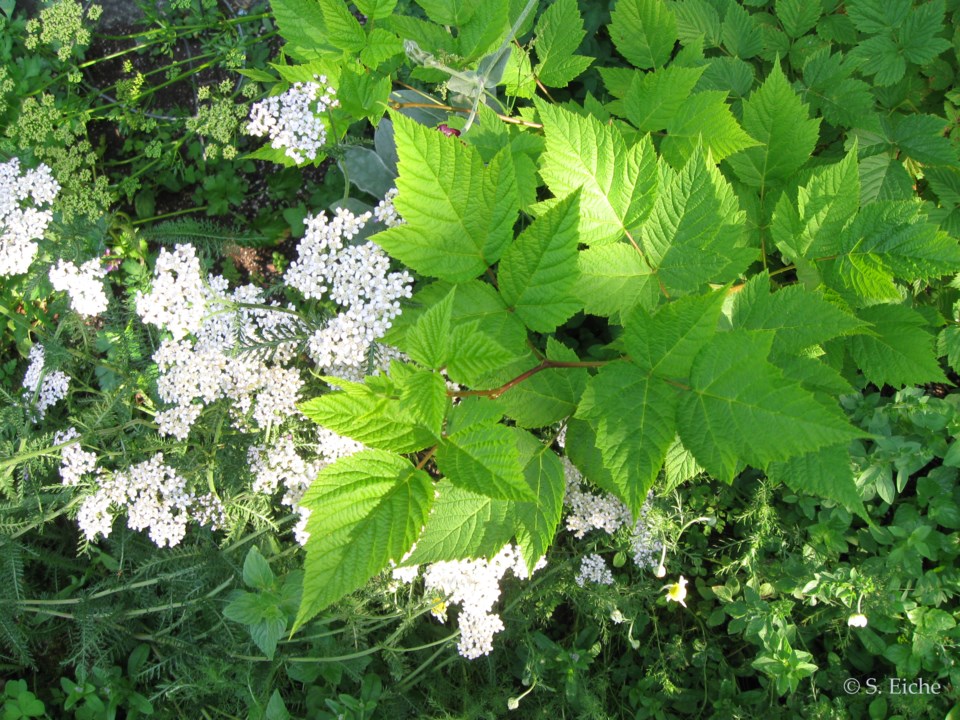The idea that everything is connected to everything else is not new, it’s been around for centuries. I’d never thought about it very much until I started to focus increasingly on nature, on our environment, on the lives it sustains. But it was only when I decided to turn my hand to gardening that its profound significance with regard to pollinators dawned on me.
Nature works to a master plan. All that exists, exists for a purpose. The flora that grows in a particular place does so because the climate and other factors – soil, light and water – are favourable. The fauna that lives there does so because food and shelter, often supplied by the flora, are suitable and available. Native plants support native wildlife. And biodiversity, not monoculture, is in nature’s master plan.
In parts of Vancouver and the surrounding communities, including Richmond, you’ll see palm trees in many yards. Palm trees are indigenous to places such as India, Africa and Southeast Asia, among other regions with tropical and subtropical climates. The Pacific Northwest is not their habitat. Locally, we’ll often see palm trees planted in a rondel with other exotic species, the whole ensemble looking like a gigantic brooch pinned to the chest of the lawn. It might be a feast for the homeowner’s eyes, but it offers nothing to our wildlife. Non-native trees are not interchangeable with native trees, their role is not the same.
Since tending a garden, I’ve been paying attention to insect-plant and bird-plant mutualistic relationships, which exist because native flora and native fauna evolved together. I may think I’m the one in control in my garden, but in fact, unless my plans harmonize with those of the flora and fauna, I’m in for a disappointment. When it comes to the nourishment of beneficial insects and pollinators, I’ve got to look at the situation from their perspective, not mine. I might be interested in trying out foreign foods, but the pollinators aren’t. They head for plants that have always supplied a part of their diet. Confronted by a familiar plant, the pollinators know what to do and where to go. When they encounter a strange plant, they’re baffled and ignore it.
The most common pollinators in our neighbourhood are bees, hoverflies, butterflies, wasps and birds. There are approximately 450 species of wild bees native to BC, but I don’t think I’d recognize them in my garden. What I do recognize are the butterflies, bumblebees and honeybees that come daily. Because we have lots of large mature trees and bushes, our neighbourhood also hosts a vibrant community of birds, especially small songbirds and hummingbirds. Their role in pollination is as important as that of the insects.
By late winter, those of us who garden are already itching for seeds and plants to start appearing in garden centres. When I was a novice gardener, I’d walk through nurseries as if I were a little girl turned loose in a toy store. My eyes guided my choices. Over the years I’ve learned (and am still learning) why it’s essential to proceed with caution.
Plant breeders (in essence genetic engineers) change the characteristics of plants to improve them for the purposes of mankind. When it comes to flowers, breeders search for ways to make them last longer and thrive better. They also search for ways to make them more alluring, flashy, surprising. They strive to make them aesthetically pleasing to us, since it’s our eye they want to catch, given that we are the ones buying them. All the while, the beneficial insects and birds – our pollinators – stay the same, with the same routines, same appetites and same requirements for survival.
What I learned this year is to avoid doubled flowers. I bought fuchsia for a hanging basket, and the label of the cultivar Blue Mirage convinced me it would be perfect. I loved the colours – violet-blue corolla with white sepals – and the flowers were double. The plant looks gorgeous. And yet not a single insect or hummingbird has ever visited it! The mass of petals confounded them. They found no way to access food.
In order to make the best choices we need to watch what is happening in the garden. What we patiently observe over the years should be what guides us. Everything is connected, but it’s not a good idea to tinker with nature’s master plan.
Sabine Eiche is a local writer and art historian with a PhD from Princeton University. She is passionately involved in preserving the environment and protecting nature. Her columns deal with a broad range of topics and often include the history (etymology) of words in order to shed extra light on the subject.



